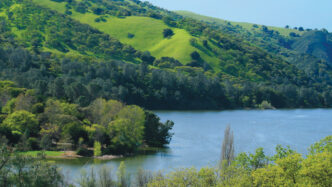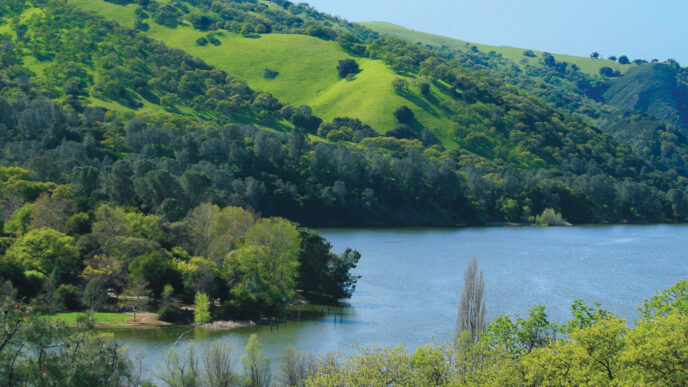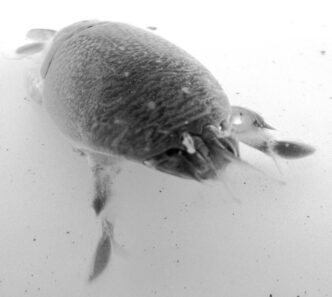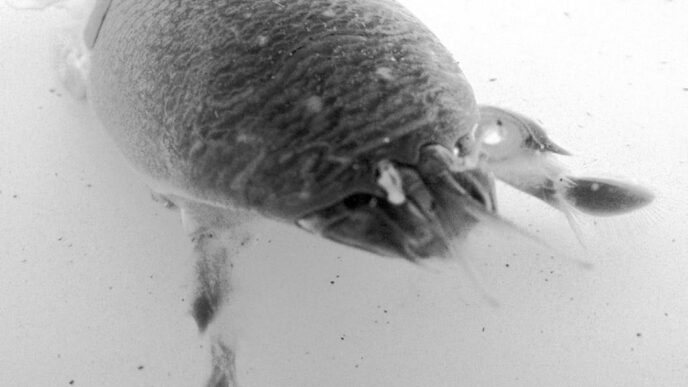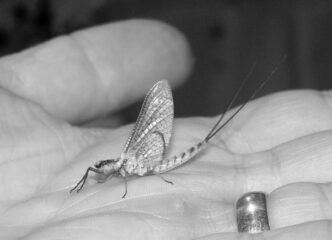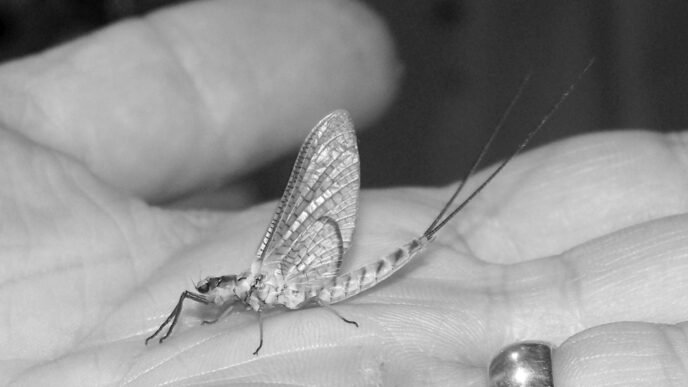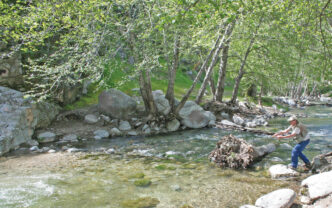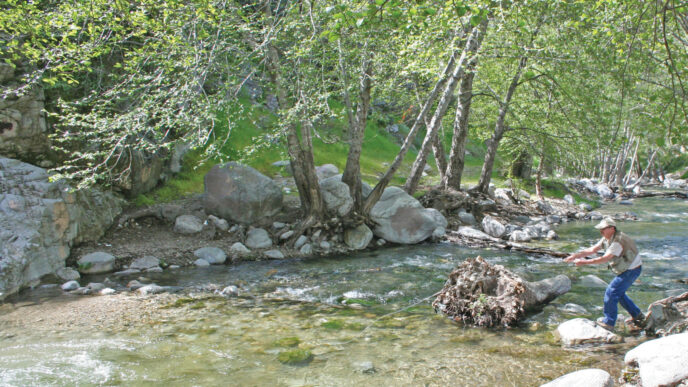Many notable things come in threes, but you would have to be one of the Three Stooges (or three sheets in the wind) to believe three is the limited number of places in Northern California with great trout fishing. Moving from late spring into early summer, many fisheries are entering prime time, and it might actually pose a challenge to find a bad place to fish during this time of the year. Unfortunately, the rest of the world knows this, and some of the more popular spots take on aspects of a three-ring circus.
The trio of fisheries mentioned here, Keswick Reservoir, the lower Sacramento River, and the fly-fishing-only section of the Trinity River, are hardly “new” fisheries. All have been publicized widely, but they can still offer an experience where the norm is two’s company, three’s a crowd, rather than a three-legged race from the parking lot to find an available rock on which to stand. They all fish well this time of year and contain some of the best of what the season has to offer.
Keswick Reservoir
Keswick Reservoir is the nine miles of water between Shasta Dam to the north and Keswick Dam to the south, just above Redding. Like some kind of aquatic Three Mile Island, it remains one of the most under-visited destinations I’m aware of. The reasons for this are several.
First, it isn’t a place you can expect to succeed by fishing it “your way.” To experience the best Keswick has to offer means learning to fish it in a fairly narrow, prescribed manner, one that forces you to become a better angler. Presenting a dead-drifted nymph while the current you’re fishing is going one way and your float tube is going another takes some practice. And don’t let the “reservoir” designation fool you. The water between the two dams is moving.
Second, it’s a physically demanding fishery, and a lot of people would rather take things a bit easier. Access is very limited. Still, it’s a hauntingly beautiful place, with stunning numbers of large, wild rainbow trout to test your skills.
Third, fishing from a boat, especially on the upper reservoir below Shasta Dam, doesn’t work. Fishing from a float tube, however, can be marvelously effective, probably due to the lower profile it presents on the water.

I can already hear the catcalls from the back row of cynics, experienced anglers who think they can catch trout from a boat under any circumstance. These will often go to Keswick for the first time and end up scurrying around like three blind mice, convinced they will find a better, easier way to fish it. I have seen anglers catch fish from boats on Keswick, but, frankly, darned few. When the “Boat People” don’t catch fish, they are then apt to soothe their bruised egos by claiming Keswick is a marginal fishery.
Not only could nothing be further from the truth, but it makes one wonder about other fisheries where our angling success isn’t what we think it should be. It takes a big man or woman to admit that maybe it isn’t the fishery’s fault at all. Actor Paul Newman put it this way: “If you’re playing a poker game and you look around the table and can’t tell who the sucker is, it’s you.”
Here is what successful angling at Keswick looks like. There are two fishing “beats” on Keswick: the upper, just below Shasta Dam, the other below Motion Creek. Fish finders confirm that the closer you get to Shasta Dam, the higher the concentration of trout and the faster the current tends to be. That’s not to say there aren’t still plenty of fish downstream, but up above, the numbers are more on your side.
Fishing the upper beat means driving across Shasta Dam, launching your float tube at the first parking area you come to, fishing your way downstream, and hiking back to your vehicle. You can follow the signs for Shasta Dam from Interstate 5 by driving through the town of Shasta Lake City just north of Redding. At the dam, you will be stopped by guards who will ask to see your driver’s license. They are looking for terrorists, not anglers, and routinely wave anglers through with a warning not to stop your vehicle on the dam. In the past, they have required permits for crossing the dam, but as of this writing, they are not.
Drive across the dam and follow the curvy road until you arrive at a large, open area with restrooms, a campground, and picnic tables. Park immediately below the campground and hike up the path by the reservoir a couple of hundred feet until you see the gravel path leading down to a small bay, a great place to launch. Be careful carrying your tube and rod, since the path is steep and can be treacherous.
Take-out spots are on river right (the right when looking downstream) as you fish your way down. The first is just below Coram Ranch, the first building you see. The next is in a little bay directly beneath a white sign on the gravel road above, which is visible from the water.

To get to the lower beat, take Highway 299 just west of Redding and turn right on Iron Mountain Road. Follow this past the powerhouse and the boat-launch ramp until you come to the big sign that says “Chappie-Shasta OHV Area” and turn right. Follow the gravel road down to the reservoir and drive upstream as far as you can until you arrive at a yellow gate across the road. Park here and hike upstream with your tube or pontoon boat until you come to a wooden bridge that spans a small stream. This is Motion Creek, and there is a large, open area where you can launch your watercraft and fish your way back down to your vehicle.
While pontoon boats are a lousy idea on the upper beat due to the huge job of wrestling them back up to the road, this is not a concern on the lower beat. Down there, both put-in and take-out spots are at river level.
Water levels and the speed of the current change frequently at Keswick, so you must be ready to change the areas you fish as conditions fluctuate. Whatever happens to the water, the conditions favored by feeding fish remain the same. Look for slowly moving water three to six feet deep. If you keep this in mind, you will always be fishing the best water.
The gear and setup for fishing Keswick could not be simpler. (It’s the fishing that can be difficult.) I like a 9-foot 5weight fly rod with a floating line, but anything similar will do, providing it has enough backbone to make casts 30 feet and longer consistently from a seated position. Fish a 9-foot leader tapered to 4X fluorocarbon. I fish a single tungsten-beaded nymph hung about 5 feet under a small floating strike indicator. There is a lot of casting at Keswick, and it’s rare to take a fish closer than 30 feet from your tube. I’ve abandoned fishing droppers at Keswick because I tend to spend way too much time dealing with tangles.
My fly of choice is my own O’Brien Birds Nest, size 12, but these trout see very few flies and are not too selective. Keswick trout mainly feed on tiny midges way too small to imitate, but they will thankfully take almost any nymph pattern, provided it ’s fished well. Tungsten-beaded flies eliminate the need for split shot to get your fly down fast. Remember always to leave a bit of slack fly line between your rod tip and strike indicator. The secret to angling success at Keswick is the quality of your drift.
Fishing three to six feet of water often means casting in toward the bank. This can be tricky with the complicated currents at Keswick. Often the water eddies along the bank, meaning it’s actually flowing upstream while your tube is drifting downstream. Fortunately, there are plenty of big boulders you can tuck your tube in behind to find protection from the current.
The Lower Sacramento
Whose idea was it to describe the lower Sacramento River as a place to get away from the crowds? The guide traffic alone on this world-famous trout stream can render it indistinguishable from I-5. If you insist on fishing in Redding, you can expect many drift boats and throngs of anglers waving graphite rapiers in your face like musketeers in Gore-Tex pantaloons.
The beauty of this river, though, is that there is so much of it. Not far south of Redding there are blissfully vacant miles of river that see very little pressure. The late spring is also an excellent time to fish a little-known Pale Morning Dun hatch that seems to be gaining momentum there.
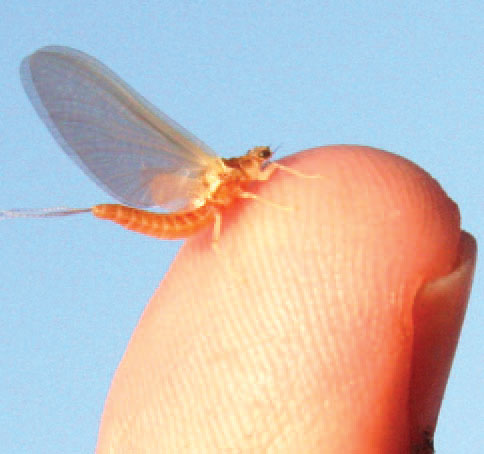
When I first started fishing the lower Sac, in the 1980s, the dominant insects of springtime were caddisflies, the Brachycentrus and the Hydropsyche. These are still around. But last spring, when I visited a favorite stretch of river one evening with my fly box loaded up with Elk Hair Caddis patterns, I became suspicious when I noted feeding fish and something definitely different about the rises. They seemed to lack the typical gusto of the classic caddis rise form. I could see small mayflies coming off the water and was amazed when I grabbed one and looked at it closely. The darned thing was orange.
Fortunately, I had other dry flies with me, although none of them were orange. A size 16 PMD Paradun looked close enough, and the trout agreed. It turned out to be a good enough hatch that I spent the next several evenings fishing until all daylight was lost. As usual, lower Sac fish requires long casts and great drifts. The real trick to this fishing is in picking up a subtle rise to your fly 70 feet out in the waning light. But it can be done.
Though I doubt that the Three Wise Men would even associate with me, I do know one wise man. As soon as I got home, I e-mailed Mike Mercer at The Fly Shop and attached a photo of my newfound orange friend. Mike said he was about 80 percent sure it was a Pale Morning Dun (Ephemerella excrucians) with an odd color variation. Until someone wiser than Mike Mercer comes along, I’m willing to call it the lower Sac PMD hatch. It’s definitely worth checking out.
The Trinity River
Admittedly, the fly-fishing-only section of the Trinity below Lewiston Dam is the least likely place of these three to offer much solitude, unless you’re willing to fish it during the week. Located about 40 minutes west of Redding off Highway 299, it is justifiably famous for easy wading and easy fishing, and how can you beat that? The water is swarming with steelhead smolts eager to grab almost any nymph or dry fly that hits the water, drifted well or not.
While both Keswick Reservoir and the lower Sacramento require as much fishing skill as you can muster, the Trinity stands out as a great place to relax and catch fish in a gorgeous setting without working too hard. Below the dam there is also abundant bird life, and you are likely to see bald and golden eagles, ospreys, cormorants, and more. Many anglers have been surprised to find there are also a few adult steelhead still hanging around.
Due to the clarity of the water, it’s easy to see areas that are a bit deeper, and these are the places to focus your efforts. Not only are there loads of willing fish for more experienced anglers who just crave an easy, pleasant day, but this is the perfect spot to introduce kids to fly fishing where there is sure to be some catching involved.
While there are plenty of great places to fish in Northern California this time of year, this particular ménage à trois of terrific destinations will certainly offer three cheers, and then some.






